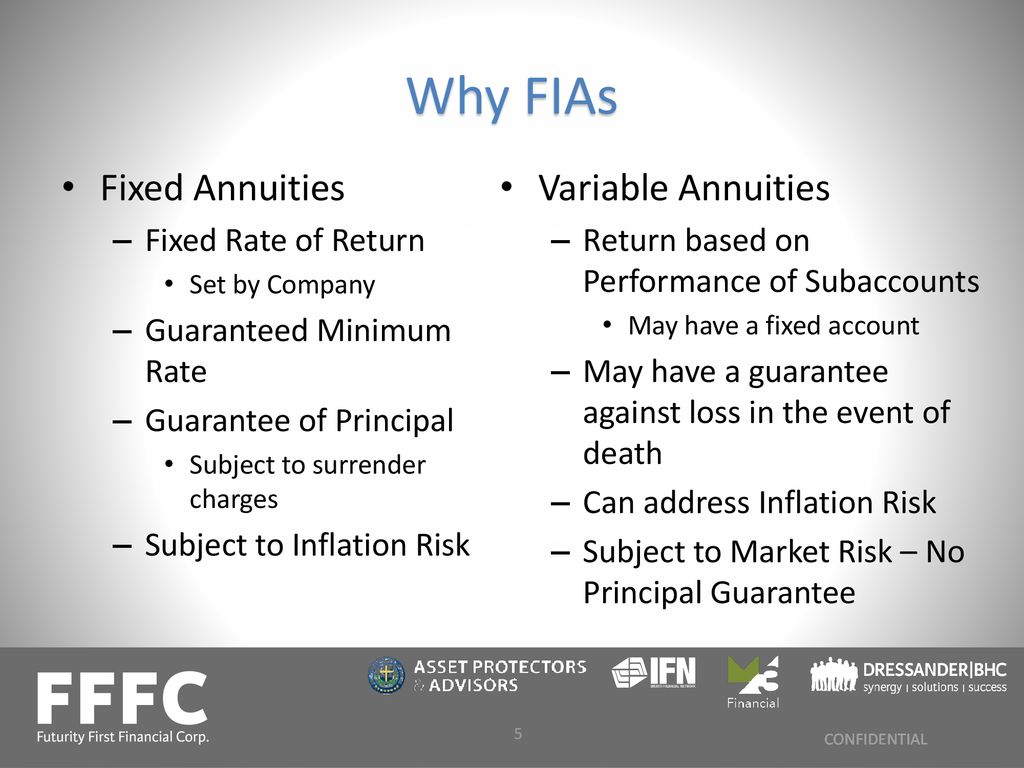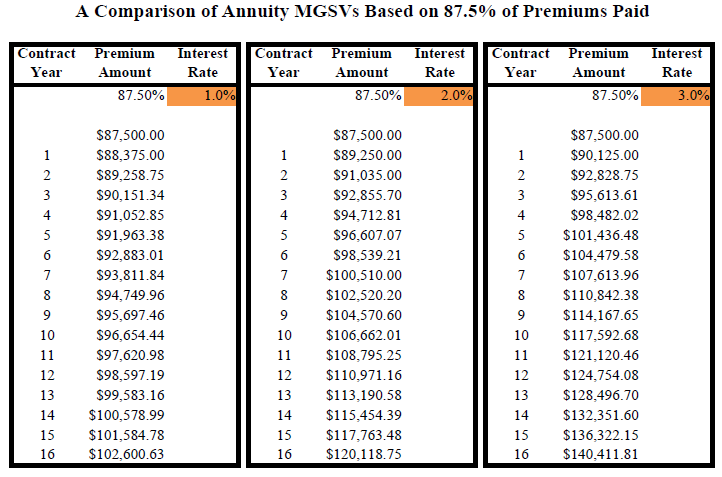All Categories
Featured
Table of Contents
Equally as with a taken care of annuity, the proprietor of a variable annuity pays an insurer a lump amount or series of settlements for the guarantee of a collection of future payments in return. As pointed out over, while a dealt with annuity grows at an ensured, continuous rate, a variable annuity grows at a variable price that depends upon the performance of the underlying investments, called sub-accounts.

Throughout the build-up phase, possessions invested in variable annuity sub-accounts expand on a tax-deferred basis and are strained just when the contract proprietor withdraws those earnings from the account. After the build-up phase comes the income stage. In time, variable annuity assets must in theory increase in worth up until the agreement owner chooses he or she would such as to start taking out cash from the account.
One of the most substantial issue that variable annuities normally present is high expense. Variable annuities have several layers of fees and expenses that can, in aggregate, produce a drag of as much as 3-4% of the agreement's worth annually. Below are the most typical fees associated with variable annuities. This expense compensates the insurance firm for the risk that it presumes under the regards to the agreement.
Decoding Fixed Income Annuity Vs Variable Growth Annuity A Closer Look at Fixed Income Annuity Vs Variable Annuity Defining What Is A Variable Annuity Vs A Fixed Annuity Benefits of Variable Annuity Vs Fixed Indexed Annuity Why Choosing the Right Financial Strategy Is a Smart Choice How to Compare Different Investment Plans: Explained in Detail Key Differences Between Different Financial Strategies Understanding the Key Features of What Is A Variable Annuity Vs A Fixed Annuity Who Should Consider Fixed Annuity Vs Equity-linked Variable Annuity? Tips for Choosing the Best Investment Strategy FAQs About What Is Variable Annuity Vs Fixed Annuity Common Mistakes to Avoid When Planning Your Retirement Financial Planning Simplified: Understanding Fixed Annuity Vs Equity-linked Variable Annuity A Beginner’s Guide to Smart Investment Decisions A Closer Look at How to Build a Retirement Plan
M&E expenditure costs are computed as a percentage of the agreement value Annuity issuers pass on recordkeeping and various other administrative prices to the agreement owner. This can be in the type of a level yearly fee or a percentage of the agreement value. Administrative fees might be consisted of as component of the M&E threat charge or may be analyzed independently.
These fees can range from 0.1% for easy funds to 1.5% or even more for proactively taken care of funds. Annuity agreements can be personalized in a number of ways to offer the specific needs of the agreement owner. Some typical variable annuity motorcyclists include ensured minimal accumulation benefit (GMAB), assured minimum withdrawal advantage (GMWB), and guaranteed minimal revenue benefit (GMIB).

Variable annuity payments provide no such tax deduction. Variable annuities have a tendency to be very ineffective vehicles for passing wealth to the future generation because they do not take pleasure in a cost-basis change when the initial contract proprietor passes away. When the proprietor of a taxed investment account passes away, the price bases of the investments held in the account are adapted to mirror the market costs of those financial investments at the time of the proprietor's fatality.
Exploring the Basics of Retirement Options A Closer Look at Fixed Income Annuity Vs Variable Annuity Defining the Right Financial Strategy Pros and Cons of Various Financial Options Why Choosing the Right Financial Strategy Is Worth Considering Fixed Annuity Vs Variable Annuity: How It Works Key Differences Between Different Financial Strategies Understanding the Key Features of Fixed Interest Annuity Vs Variable Investment Annuity Who Should Consider Fixed Interest Annuity Vs Variable Investment Annuity? Tips for Choosing the Best Investment Strategy FAQs About Fixed Interest Annuity Vs Variable Investment Annuity Common Mistakes to Avoid When Planning Your Retirement Financial Planning Simplified: Understanding Fixed Annuity Or Variable Annuity A Beginner’s Guide to Smart Investment Decisions A Closer Look at How to Build a Retirement Plan
Such is not the situation with variable annuities. Investments held within a variable annuity do not obtain a cost-basis change when the original proprietor of the annuity passes away.
One substantial issue associated with variable annuities is the possibility for disputes of passion that might feed on the component of annuity salespeople. Unlike a financial consultant, who has a fiduciary obligation to make investment decisions that benefit the client, an insurance broker has no such fiduciary responsibility. Annuity sales are highly lucrative for the insurance experts who offer them as a result of high in advance sales compensations.

Numerous variable annuity agreements have language which positions a cap on the percentage of gain that can be experienced by particular sub-accounts. These caps stop the annuity proprietor from totally participating in a portion of gains that can otherwise be enjoyed in years in which markets create significant returns. From an outsider's viewpoint, presumably that financiers are trading a cap on investment returns for the aforementioned ensured floor on investment returns.
As noted above, surrender fees can drastically restrict an annuity owner's ability to move properties out of an annuity in the very early years of the contract. Additionally, while most variable annuities enable contract owners to withdraw a defined quantity throughout the buildup stage, withdrawals beyond this amount typically cause a company-imposed charge.
Withdrawals made from a fixed rates of interest financial investment option could additionally experience a "market value change" or MVA. An MVA changes the value of the withdrawal to show any type of modifications in rates of interest from the time that the cash was bought the fixed-rate option to the time that it was withdrawn.

On a regular basis, even the salesmen who sell them do not completely recognize just how they work, and so salesmen often take advantage of a purchaser's feelings to offer variable annuities as opposed to the values and suitability of the products themselves. We believe that capitalists ought to totally comprehend what they have and just how much they are paying to possess it.
Understanding Financial Strategies Everything You Need to Know About Deferred Annuity Vs Variable Annuity What Is Variable Annuities Vs Fixed Annuities? Advantages and Disadvantages of Different Retirement Plans Why Annuities Fixed Vs Variable Is a Smart Choice Fixed Vs Variable Annuity: How It Works Key Differences Between Fixed Annuity Vs Equity-linked Variable Annuity Understanding the Risks of Long-Term Investments Who Should Consider Immediate Fixed Annuity Vs Variable Annuity? Tips for Choosing the Best Investment Strategy FAQs About Annuities Fixed Vs Variable Common Mistakes to Avoid When Planning Your Retirement Financial Planning Simplified: Understanding Variable Vs Fixed Annuities A Beginner’s Guide to Smart Investment Decisions A Closer Look at How to Build a Retirement Plan
The very same can not be claimed for variable annuity possessions held in fixed-rate investments. These properties legitimately belong to the insurance policy firm and would therefore be at risk if the company were to stop working. Any kind of warranties that the insurance coverage company has concurred to supply, such as a guaranteed minimum earnings advantage, would be in question in the event of a business failure.
Therefore, possible purchasers of variable annuities must understand and consider the economic condition of the providing insurance provider prior to participating in an annuity contract. While the advantages and downsides of various types of annuities can be debated, the actual issue surrounding annuities is that of viability. In other words, the question is: that should possess a variable annuity? This concern can be difficult to respond to, offered the myriad variants offered in the variable annuity universe, but there are some basic standards that can assist capitalists determine whether or not annuities must play a role in their financial plans.
Besides, as the saying goes: "Caveat emptor!" This post is prepared by Pekin Hardy Strauss, Inc. Guaranteed income annuities. ("Pekin Hardy," dba Pekin Hardy Strauss Wealth Administration) for informative objectives only and is not planned as a deal or solicitation for business. The info and information in this article does not make up lawful, tax obligation, audit, financial investment, or various other expert advice
Table of Contents
Latest Posts
Analyzing Variable Vs Fixed Annuity Everything You Need to Know About Financial Strategies Breaking Down the Basics of Fixed Index Annuity Vs Variable Annuity Pros and Cons of What Is A Variable Annui
Highlighting the Key Features of Long-Term Investments A Closer Look at How Retirement Planning Works Defining the Right Financial Strategy Features of Fixed Vs Variable Annuity Pros And Cons Why Fixe
Understanding Financial Strategies Key Insights on Deferred Annuity Vs Variable Annuity Breaking Down the Basics of Investment Plans Benefits of Fixed Income Annuity Vs Variable Growth Annuity Why Fix
More
Latest Posts